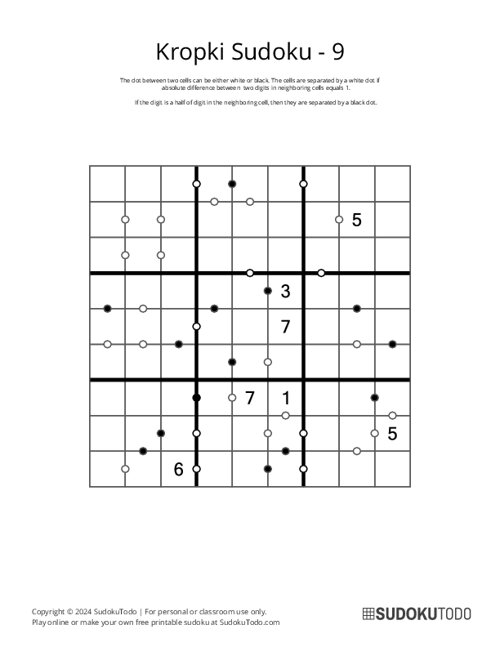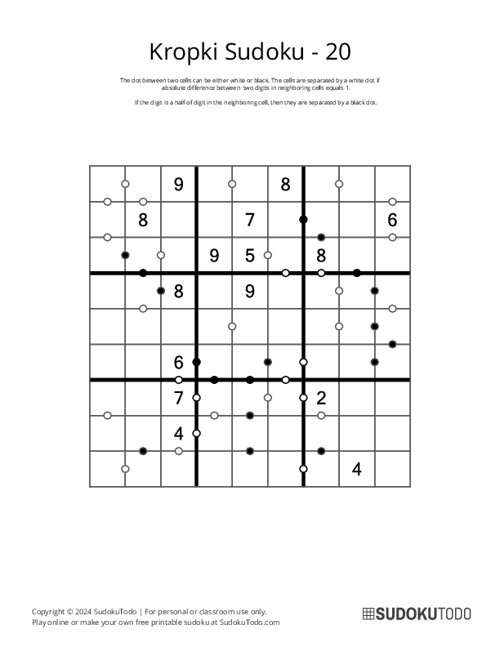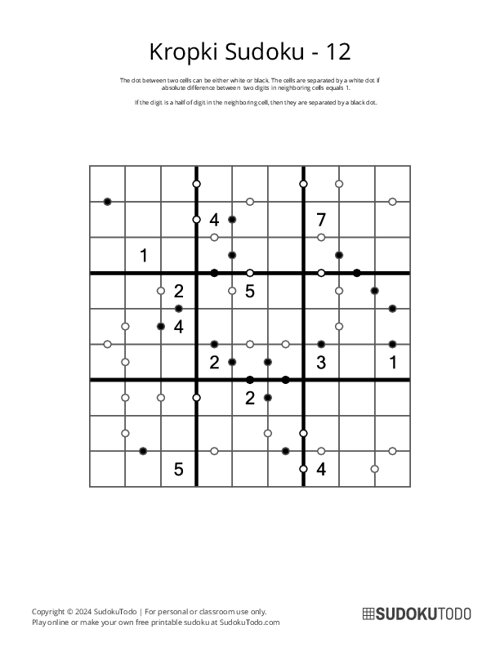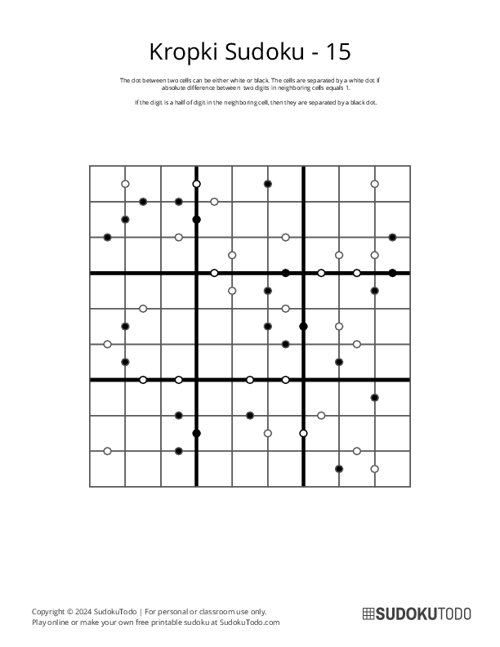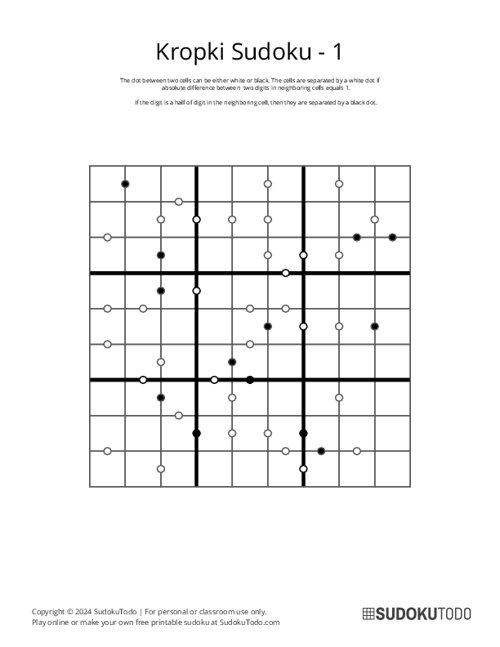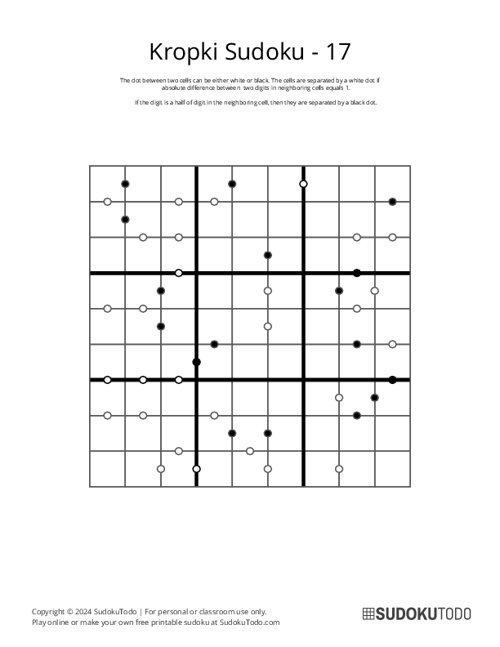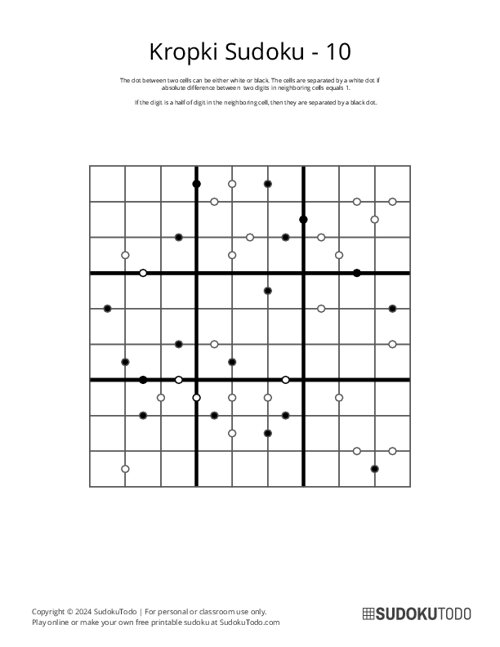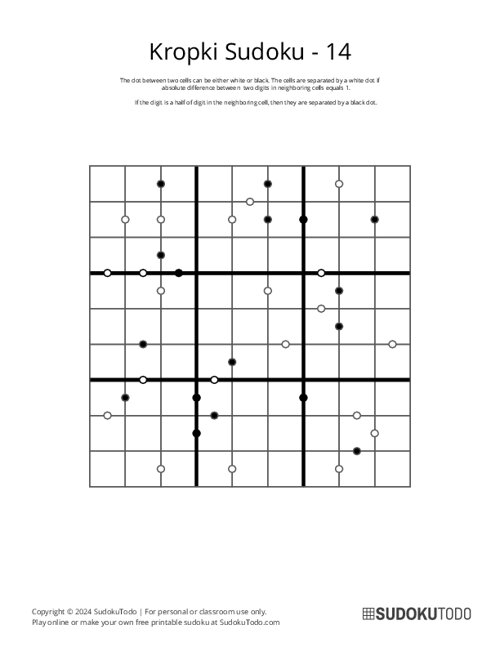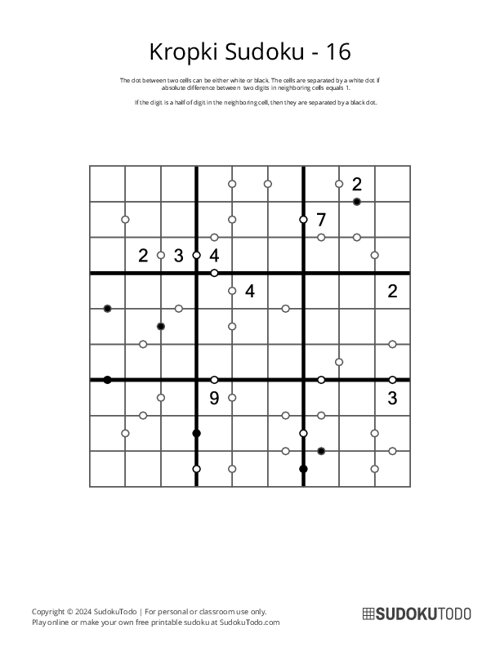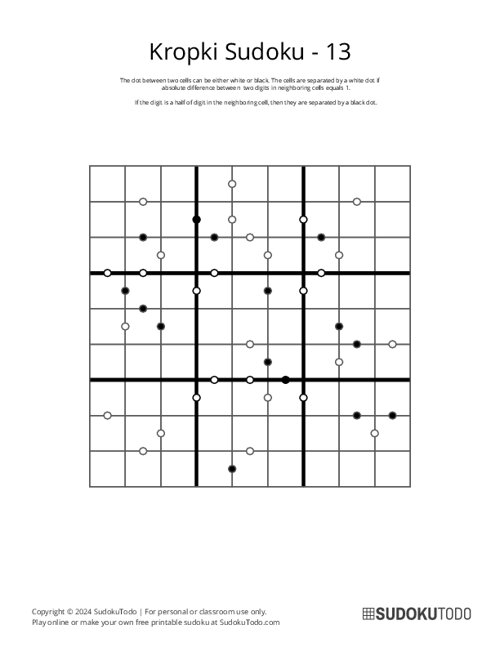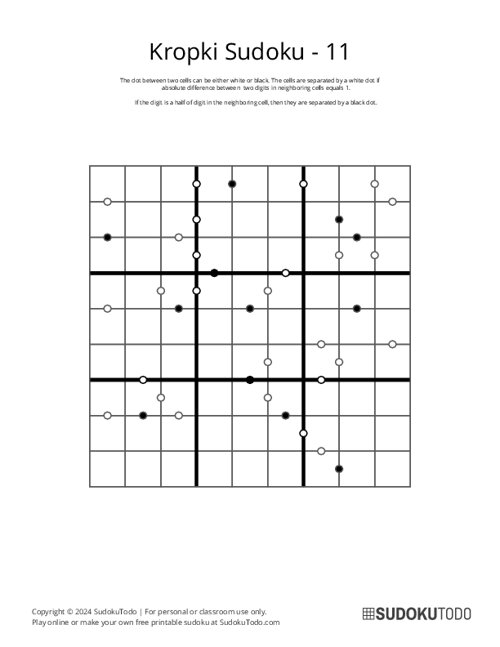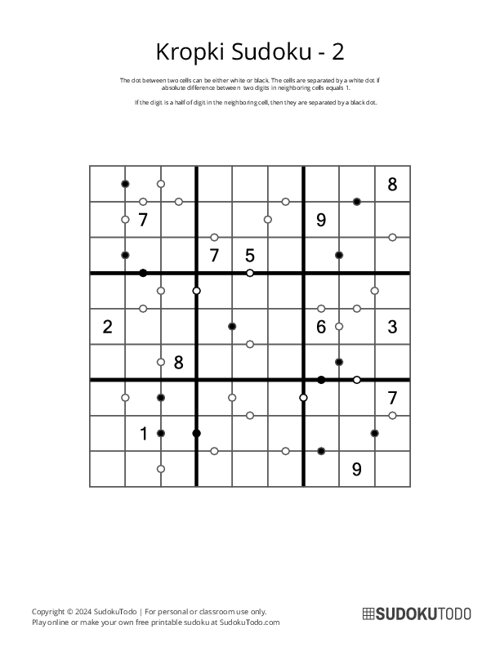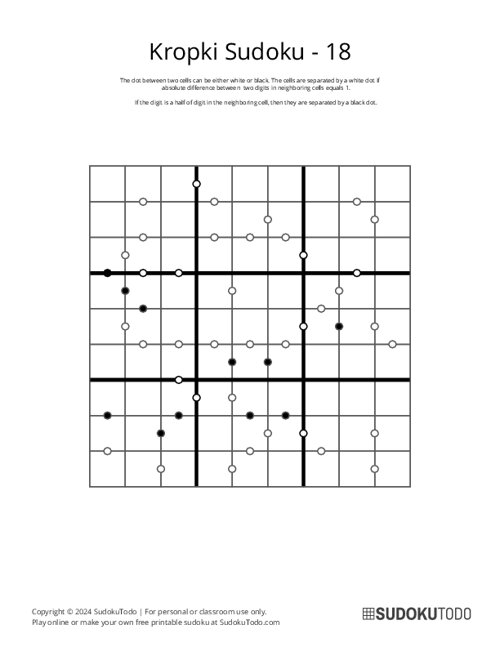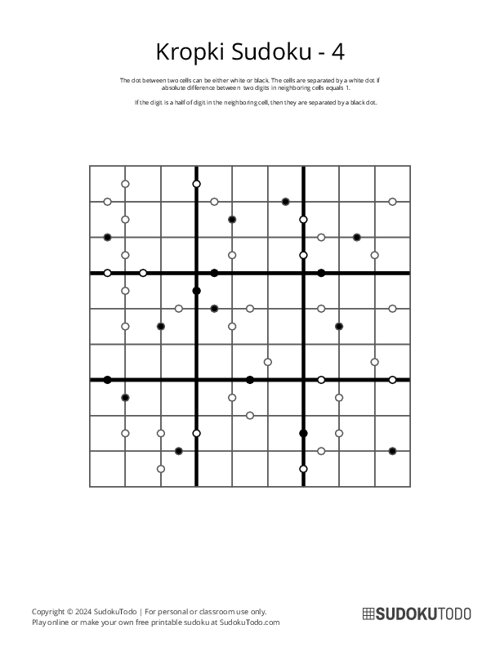Printable Sudoku
- Alphabet
- Battleships
- Binary
- Bridges / Hashi
- Chain Sudoku
- Consecutive
- Cross Sudoku
- Flower Sudoku
- Frame Sudoku
- Futoshiki
- Galaxies
- Greater Than
- Hitori
- Jigsaw Sudoku
- Kakuro
- KenKen
- Killer Sudoku
- Kropki Sudoku
- Little Killer
- Magic Squares
- Nonogram
- Odd Even Sudoku
- Outside Sudoku
- Rossini Sudoku
- Samurai Sudoku
- Sandwich
- Skyscraper
- Slitherlink
- Sohei Sudoku
- Star Battle
- Sudoku
- Sudoku for Kids
- Sudoku Mine
- Sudoku XV
- Sujiken
- Tripledoku
- Tripod Sudoku
- Twodoku
- Vudoku
- Windmill
Special Variations
Play / Solve
- Home»
- Kropki Sudoku
Kropki Sudoku Puzzles
Download free Kropki Sudoku puzzles printable sheets. These puzzles are fun and challenging, with special white and black dots to help you solve them. Perfect for puzzle enthusiasts of all skill levels. Download, print and start solving.
Showing 1-15 of 20 records
Sort by:
Kropki Sudoku - 9
Kropki Sudoku - 20
Kropki Sudoku - 12
Kropki Sudoku - 15
Kropki Sudoku - 1
Kropki Sudoku - 6
Kropki Sudoku - 17
Kropki Sudoku - 10
Kropki Sudoku - 14
Kropki Sudoku - 16
Kropki Sudoku - 13
Kropki Sudoku - 11
Kropki Sudoku - 2
Kropki Sudoku - 18
Kropki Sudoku - 4
About Kropki Sudoku Puzzles
Kropki Sudoku is a type of Sudoku puzzle with extra rules shown by black and white dots between some squares. These dots give hints about how the numbers in the connected squares are related, making the puzzle more fun and tricky to solve.
If the difference between two numbers in neighboring cells is 1, there is a white dot between them. If one number is half of the other, there is a black dot between them.
Basic Rules / How to Play
- Standard Sudoku Rules: Each row, column, and 3x3 subgrid (box) must contain all the digits from 1 to 9 without repetition.
- No Repetition: No number can repeat within a row or column.
Kropki Rules
- White Dot: If there's a white dot between two cells, the numbers in those cells must be consecutive (e.g., 2 and 3, 5 and 6).
- Black Dot: If there's a black dot between two cells, one number must be double the other (e.g., 2 and 4, 3 and 6).
- No Dot: If there's no dot between two cells, the numbers in those cells cannot be consecutive or have a 1:2 ratio.
Solving Tips and Techniques:
Here are some easy ways to solve a Kropki Sudoku puzzle.
- Begin with Starting Clues: Begin with the cells that are linked by dots because they give you the most clues. Use the rules for black and white dots to figure out what numbers can go in these cells.
- Use the BLACK Dots: For black dots, note that valid pairs are from the set:(1,2),(2,4),(3,6),(4,8),(5,10),(6,12),(7,14),(8,16),(9,18)(1,2),(2,4),(3,6),(4,8),(5,10),(6,12),(7,14),(8,16),(9,18). Only pairs within the range of 1–9 are usable.
- Use the WHITE Dots: For white dots, valid consecutive pairs are: (1,2),(2,3),(3,4),(4,5),(5,6),(6,7),(7,8),(8,9)(1,2),(2,3),(3,4),(4,5),(5,6),(6,7),(7,8),(8,9).
- Look for Absence of Dots: The absence of a dot between two cells indicates that their values are neither consecutive nor in a 1:2 ratio. Use this information to eliminate possibilities.
- Isolated Black Dots: A black dot shows a strict 1:2 ratio between two cells. This means one cell is always twice as big as the other. Because of this, there are usually only two possible answers for that pair, which can make solving easier.
- Utilize Chains: A series of black or white dots can create a "chain" that affects the numbers in nearby cells. Example, a chain of black dots might force the numbers to follow a pattern, like 1 → 2 → 4 → 8. Similarly, a chain of white dots makes sure the numbers are next to each other in order, like 3 → 4 → 5 → 6.
Kropki Sudoku puzzles provide an engaging twist on the traditional Sudoku game. By learning these methods and using logical thinking, you can solve Kropki Sudoku puzzles, no matter how easy or hard they are.
